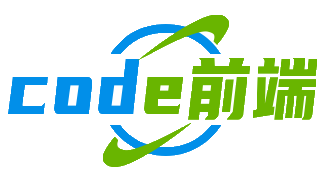JS 如何助力 React 开发?
React 是当下非常流行的前端开发框架,而 JavaScript 作为其核心编程语言,在 React 开发中起着至关重要的作用,那 JS 究竟是如何助力 React 开发的呢?下面我们来详细探讨。
JS 构建 React 组件的基础
在 React 中,组件是构建用户界面的基本单元,而 JS 提供了创建组件的语法和能力,我们可以通过 JS 的函数式组件或者类组件的方式来定义组件。
函数式组件使用简单的 JS 函数来创建,它接收 props(属性)作为参数,并返回一个 React 元素。
function Welcome(props) {
return <h1>Hello, {props.name}</h1>;
}
这里通过 JS 函数的语法,简洁地定义了一个接收 name 属性并展示欢迎信息的组件。
类组件则是通过 ES6 的类语法来创建,它继承自 React.Component,需要实现 render 方法来返回组件的 UI 结构。
class Clock extends React.Component {
render() {
return (
<div>
<h2>It is {this.props.date.toLocaleTimeString()}.</h2>
</div>
);
}
}
JS 的类语法为类组件提供了封装性和继承等特性,方便我们管理组件的状态和生命周期。
JS 处理 React 组件的状态
状态(state)是 React 组件的重要部分,它决定了组件的 UI 如何呈现,JS 提供了操作和管理状态的能力。
在类组件中,我们可以通过 this.state 来定义和访问状态,通过 this.setState 方法来更新状态。
class Toggle extends React.Component {
constructor(props) {
super(props);
this.state = {isToggleOn: true};
// 为了在回调中使用 `this`,这个绑定是必不可少的
this.handleClick = this.handleClick.bind(this);
}
handleClick() {
this.setState(prevState => ({
isToggleOn:!prevState.isToggleOn
}));
}
render() {
return (
<button onClick={this.handleClick}>
{this.state.isToggleOn? 'ON' : 'OFF'}
</button>
);
}
}
这里通过 JS 的对象语法定义了 isToggleOn 状态,通过 setState 方法根据用户点击按钮的操作来更新状态,从而实现按钮文字在 ON 和 OFF 之间切换。
在函数式组件中,随着 React Hooks 的出现,我们可以使用 useState 钩子来处理状态。
import React, { useState } from'react';
function Example() {
// 声明一个新的叫做 “count” 的 state 变量
const [count, setCount] = useState(0);
return (
<div>
<p>You clicked {count} times</p>
<button onClick={() => setCount(count + 1)}>
Click me
</button>
</div>
);
}
useState 是一个 JS 函数,它返回一个数组,第一个元素是当前状态值,第二个元素是更新状态的函数,通过这种方式,函数式组件也能方便地管理状态。
JS 实现 React 组件的生命周期管理
React 组件有其生命周期,JS 帮助我们在不同的生命周期阶段执行相应的操作。
在类组件中,有 componentDidMount(组件挂载后)、componentDidUpdate(组件更新后)、componentWillUnmount(组件卸载前)等生命周期方法。
class Timer extends React.Component {
constructor(props) {
super(props);
this.state = {seconds: 0};
}
componentDidMount() {
this.timerID = setInterval(
() => this.tick(),
1000
);
}
componentWillUnmount() {
clearInterval(this.timerID);
}
tick() {
this.setState(prevState => ({
seconds: prevState.seconds + 1
}));
}
render() {
return (
<div>
<p>Seconds: {this.state.seconds}</p>
</div>
);
}
}
在 componentDidMount 生命周期方法中,通过 JS 的 setInterval 函数设置定时器,在 componentWillUnmount 中通过 clearInterval 清除定时器,实现了组件挂载和卸载时的资源管理。
对于函数式组件,React Hooks 中的 useEffect 钩子可以模拟类组件的生命周期。
import React, { useState, useEffect } from'react';
function Example() {
const [count, setCount] = useState(0);
// 类似于 componentDidMount 和 componentDidUpdate:
useEffect(() => {
// 更新文档的标题
document.title = `You clicked ${count} times`;
});
return (
<div>
<p>You clicked {count} times</p>
<button onClick={() => setCount(count + 1)}>
Click me
</button>
</div>
);
}
useEffect 接收一个函数作为参数,这个函数会在组件渲染后执行(默认情况下,在每次渲染后都会执行),可以在其中进行副作用操作,比如更新文档标题等。
JS 实现 React 组件间的通信
React 应用通常由多个组件组成,组件间的通信至关重要,JS 提供了多种方式来实现组件间的通信。
(一)父子组件通信
- 父组件向子组件传递数据:通过 props(属性)来实现,父组件在渲染子组件时,将数据作为属性传递给子组件。
function ParentComponent() { const message = "Hello from parent"; return <ChildComponent message={message} />; }
function ChildComponent(props) { return
{props.message}
; }这里父组件 `ParentComponent` 将 `message` 数据通过 `props` 传递给子组件 `ChildComponent`。
- **子组件向父组件传递数据**:通常通过父组件传递给子组件的回调函数来实现。
```jsx
function ParentComponent() {
const handleChildData = (data) => {
console.log("Received from child:", data);
};
return <ChildComponent onData={handleChildData} />;
}
function ChildComponent(props) {
const sendData = () => {
props.onData("Data from child");
};
return <button onClick={sendData}>Send Data</button>;
}子组件 ChildComponent 通过调用父组件传递的 onData 回调函数,将数据传递给父组件。
(二)非父子组件通信
- 使用 Context(上下文):React 提供的
createContext方法可以创建一个上下文对象,通过Provider和Consumer来实现跨组件传递数据。const ThemeContext = React.createContext('light');
function App() { return (
function Toolbar() { return (
function ThemedButton() { return (
- 使用状态管理库(如 Redux):虽然 Redux 本身是一个独立的库,但它基于 JS 实现,Redux 通过创建 store(存储),定义 actions(动作)和 reducers(纯函数,用于处理动作更新状态),实现了全局状态管理,从而方便非父子组件间的通信。
// 定义 action const increment = () => ({ type: 'INCREMENT' });
// 定义 reducer const counterReducer = (state = 0, action) => { switch (action.type) { case 'INCREMENT': return state + 1; default: return state; } };
// 创建 store import { createStore } from'redux'; const store = createStore(counterReducer);
// 在组件中使用 import React from'react'; import { useSelector, useDispatch } from'react-redux';
function Counter() { const count = useSelector(state => state); const dispatch = useDispatch();
return (
Count: {count}
JS 在 React 开发中从组件构建、状态处理、生命周期管理到组件间通信等多个方面都发挥着关键作用,熟练掌握 JS 的相关知识和特性,能够让我们更加高效地进行 React 应用的开发,构建出功能丰富、交互良好的用户界面,无论是初学者还是有经验的开发者,深入理解 JS 与 React 的紧密结合,都是提升 React 开发技能的重要途径。
版权声明
本文仅代表作者观点,不代表Code前端网立场。
本文系作者Code前端网发表,如需转载,请注明页面地址。
 code前端网
code前端网


发表评论:
◎欢迎参与讨论,请在这里发表您的看法、交流您的观点。